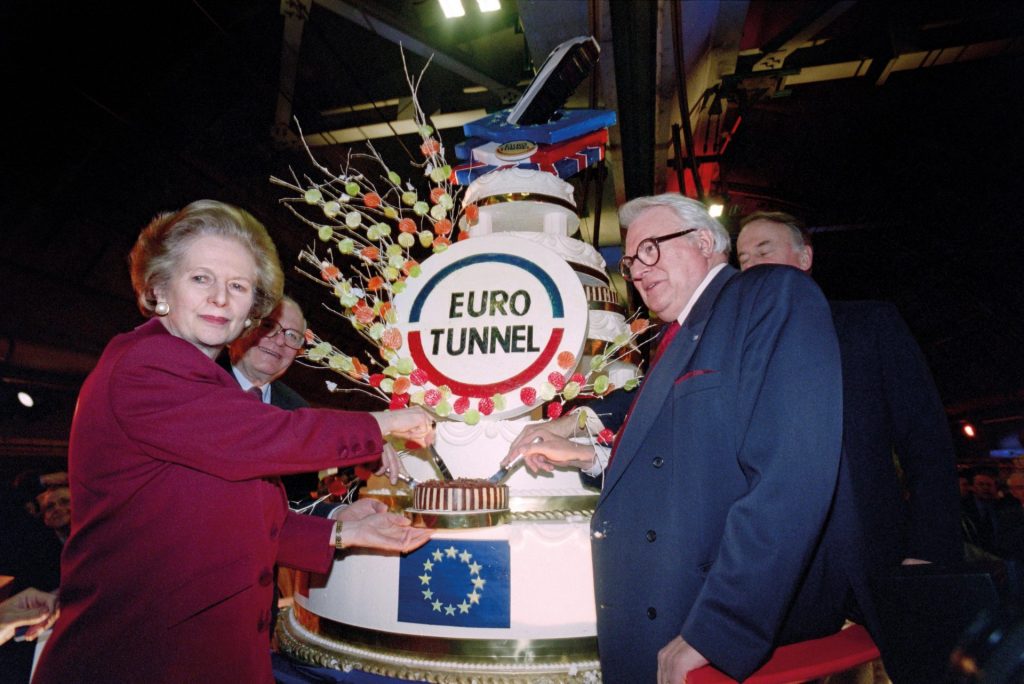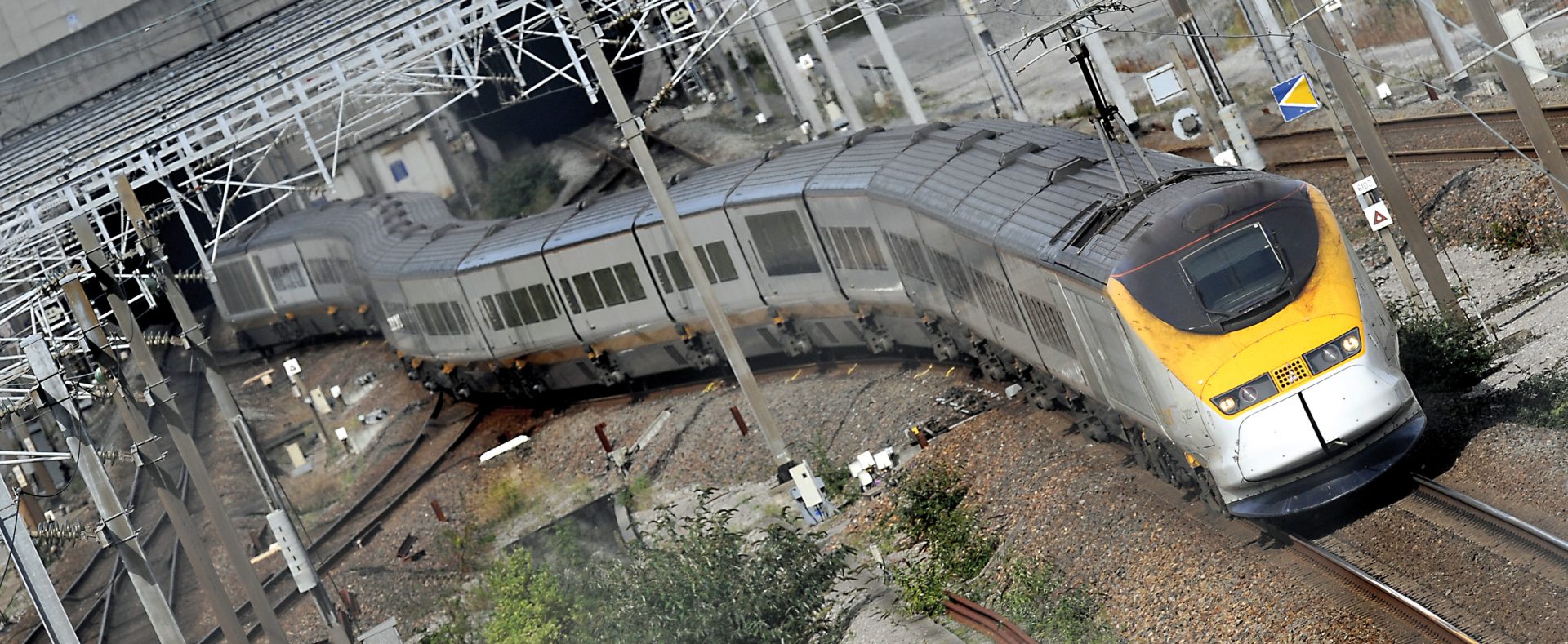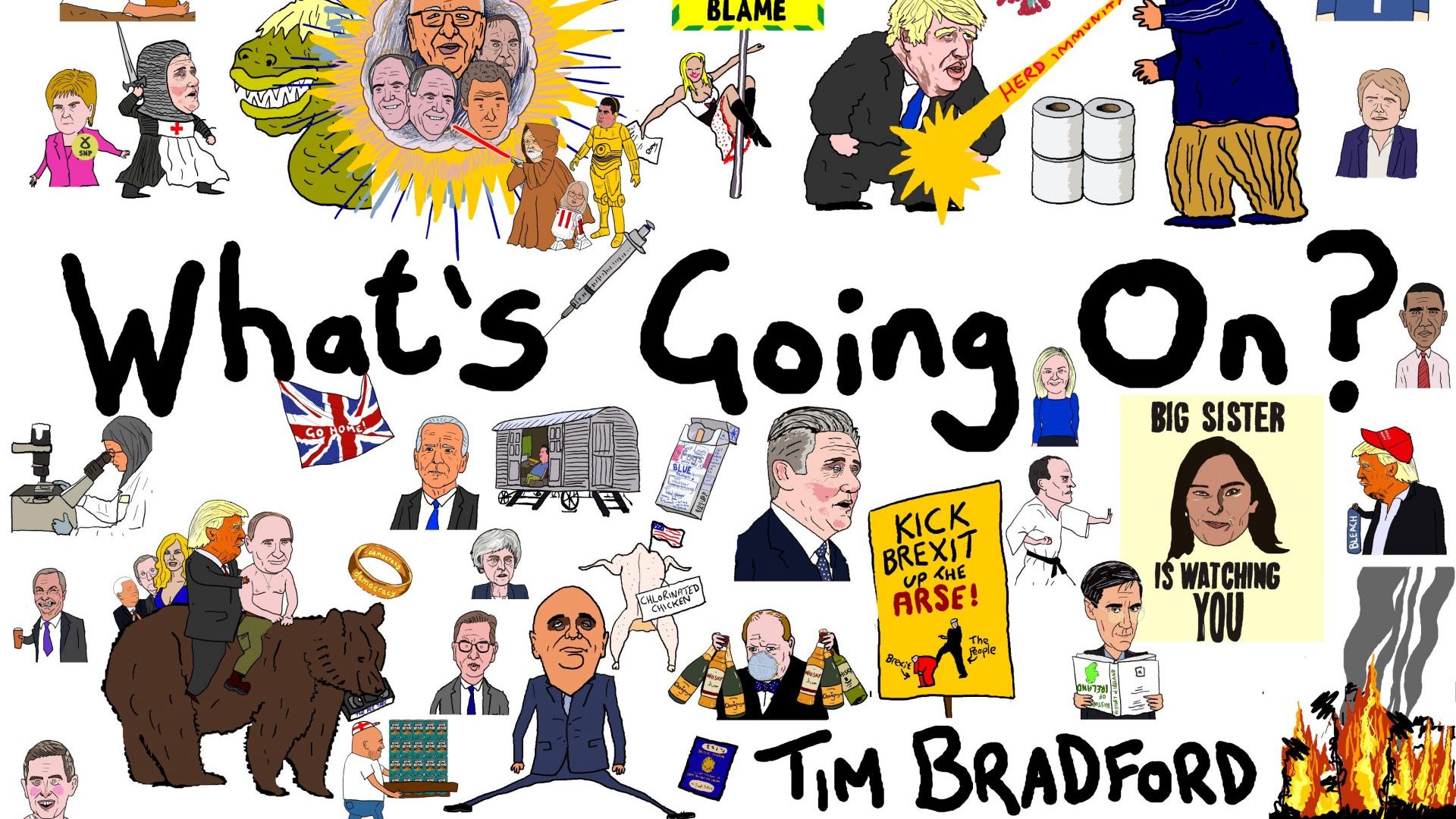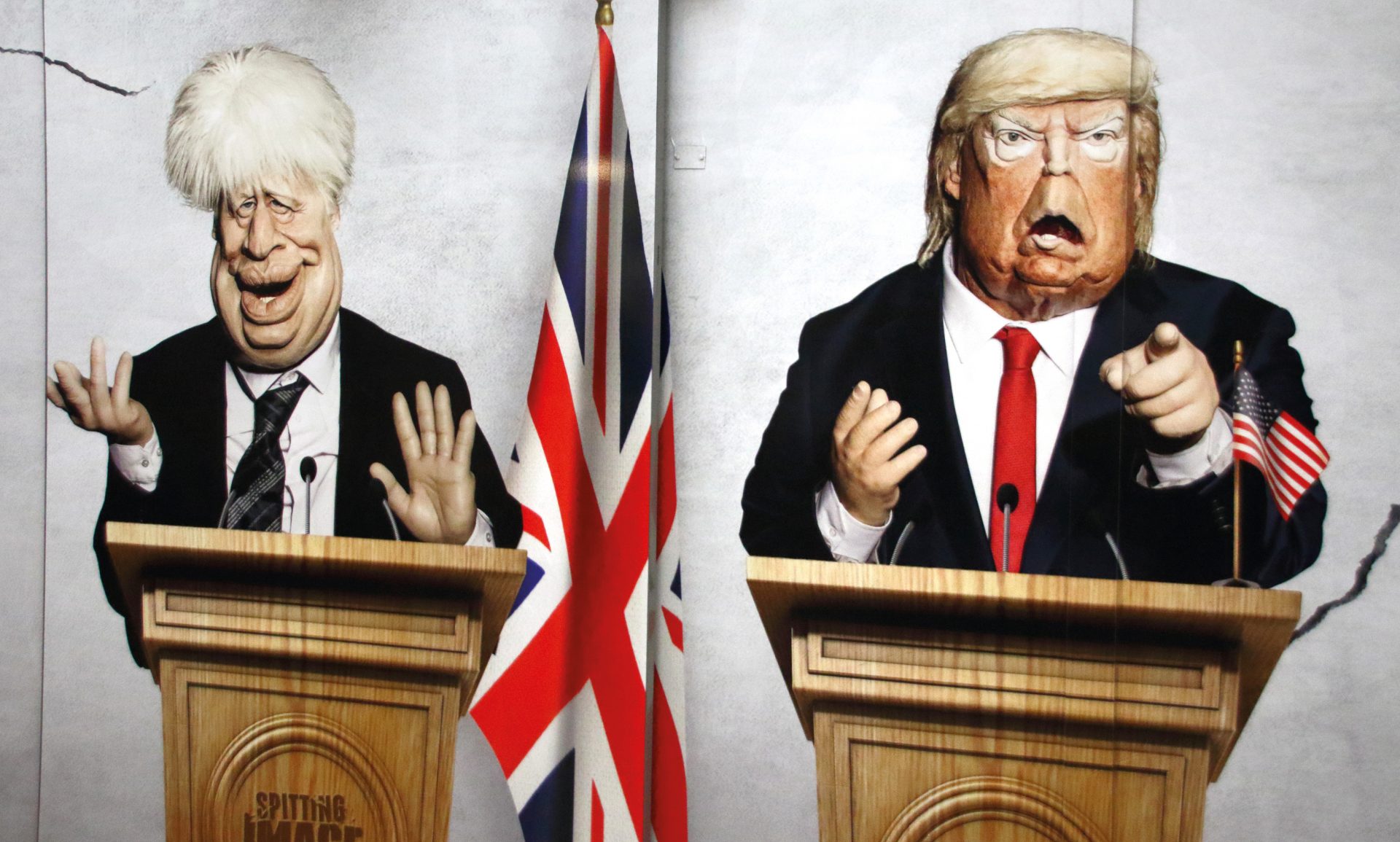At the height of the pandemic, Eurostar almost hit the buffers. For a few worrying months, with lockdowns in places and travel quarantines required for most, the high-speed train service was operating a single service a day to Paris and Brussels from London, provided mainly for key workers.
In 2019, the last “normal” year of travel, Eurostar recorded a healthy £62.4m profit. In 2020, losses amounted to £427.8m.
Overall, revenue slumped year-on-year by 75% to £256m from £1.03bn. Passenger numbers collapsed in similar proportion; from 11.1 million annually to 2.5 million.
For a while, with debts soaring, it was touch and go. A bailout was urgently required. Would the British or French governments step in with a rescue? Neither seemed to be forthcoming.
French transport secretary Jean-Baptiste Djebbari promised somewhat vaguely that the French state would “be there” for Eurostar in an emergency (a position it seemed already to have attained), before going on to add that, as a British-based company with a headquarters in London, it was more of a problem for the UK authorities.
Meanwhile, his British counterpart, Grant Shapps, speaking to the Transport Select Committee in February, seemed to be washing his hands of all responsibility when he said: “We’ll look to be helpful, but we don’t actually own this company.”
Shapps was drawing attention to the fact that Eurostar is 55 per cent owned by SNCF (the French state railway company Societe Nationale des Chemins de Fer Francais), 40 per cent by Canadian investment companies and five per cent by the National Railway Company of Belgium. The UK government sold its 40 per cent share to the Canadians in 2015 – for more than £757m.
Shapps, after repeating his earlier point in more blunt terms (“we don’t own the thing”) and that a UK bailout was “not primarily for us to do”, went on to say that if the company did collapse “the physical nature of the tunnel wouldn’t disappear, or the infrastructure.” In other words, when travel returned to normal, something would fall into place eventually.
Perhaps a new operator would start on the route. The trains would, somehow or other, keep on rolling beneath the sea.
With around 3,000 jobs at risk, it was a critical period. Eurostar argued it should be provided with the same sort of support given to airlines such as British Airways and easyJet during the pandemic as part of the British government’s economic rescue plans.
However, such funds, to the tune of hundreds of millions of pounds, never came Eurostar’s way. Instead, it survived the height of the lockdowns thanks to two cash injections from shareholders – one of £172m and a second in May of £250m.
“The refinancing is a major step towards securing Eurostar’s future,” said chief executive Jacques Damas after the bailout by shareholders and banks (led by France) in May, the sense of relief of having come so close yet survived palpable.
At the time, with COP26 in Glasgow just around the corner, environmentalists were furious that the onus was being put on such a green form of transport to settle its bills while air carriers were let off the hook.
“Airlines have been given exactly what the chancellor, the prime minister, economists, and the public have said they should not be given – billions in cheap and easy loans to keep them polluting without any commitments to reduce their emissions or even keep their workers on the payroll,” said Fiona Nicholls, climate campaigner at Greenpeace UK.
The green lobby argued that just because it was a cross-border railway, it seemed to be being punished. Domestic railways had, after all, secured emergency funding. Eurostar seemed to have been given a tough ride.
Why? Mark Smith, founder of the train travel website seat61.com, who was once station manager at Charing Cross, London Bridge and Cannon Street stations as well as co-ordinator of a Department for Transport team setting fares on the British rail network, is in no doubt.
“The government we have at the moment has xenophobic tendencies,” he says. “Basically, it is no longer the Conservative Party, it is the Vote Leave Party that has taken over.
“They are known for their hostility to all things foreign, and Eurostar is majority-owned by French railways.”
Smith points to double standards in decision making at the top. British Airways, which was bailed out, has Spanish owners, but the brand appeared sacrosanct because of its national airline status.
Yet Eurostar is, he says, “a British registered company employing British people in Britain and it’s a national strategic asset.
“Had it gone to the wall, something would have started up in its place but not immediately because it takes so long to get everything together. The British government was negligent by not, at the very least, applying the same rules to Eurostar as to equivalent airlines. It’s appalling.”
One of the big financial pressures on the high-speed train operator during the pandemic has been leasing costs on 17 new trains. With these high fixed charges and a sudden revenue crisis, Eurostar’s business model was undone. And unlike the international services run by Germany’s Deutsche Bahn, which is part of the much bigger German national railway, Eurostar is a standalone company, separate from its majority owner SNCF. This was, and remains, a precarious situation.
So, how near was the company to actually returning trains to the sheds? “Very close,” says Smith. “They were haemorrhaging money.”
Eurostar began trains between London Waterloo and Paris Gare du Nord in November 1994, after the completion of the £10.5bn Channel Tunnel – officially opened on May 6, in 1994. This was, of course, a national occasion attended by the Queen, who arrived in Calais on a Eurostar – along with Prince Philip and prime minister John Major – to be met by President Mitterrand.

The Queen and the president then shared a journey back through the tunnel in the Queen’s Rolls-Royce Phantom VI on a car-carrying train. “I’ve had a very comfortable journey in a very comfortable car, and it just happened to be yours, ma’am,” Mitterrand gushed afterwards.
It was deemed by many to be a highly symbolic moment; the physical connection with the continent via the 31-mile-long tunnel being regarded as an important part of a seemingly inevitable process of British and European integration – solidifying peace and togetherness 50 years after the Second World War.
The Guardian referred to Britain as being “no longer an island” and its transport reporter Rebecca Smithers, covering events that day, reflected: “For the first time, the phrase symbolising British isolation – fog in the Channel, Europe cut off – could no longer apply.”
In her speech to gathered crowds, the Queen, referring obliquely to delays to the tunnel’s construction, said: “Enterprises of this scale and scope have always shared an element of the unpredictable.”
Yet it was also to prove a prescient remark. From the very start, passenger numbers did not live up to expectations – a target of 21.4 million users annually had been set for 2004, although the true figure fell two-thirds short of that, mainly because initial ticket prices were too high.
A major fire on a Eurotunnel Shuttle train carrying heavy good vehicles in 2008, not long after Eurostar had switched its London terminus from Waterloo to St Pancras, dented passenger numbers further. Troubles with breakdowns and cancellations during snowy conditions were to follow, stranding some customers for hours.
Meanwhile, looming in the background throughout: The rise and rise of low-cost airlines, especially Ryanair and easyJet. How does anyone compete with widespread 1p flights (plus tax)?
The rail historian Christian Wolmar believes a big trick was missed during Eurostar’s early days, both by the company and by politicians. This, he says had far-reaching consequences:
“They failed to see it as a huge part of the European project and to say: ’right, this should be a rapprochement, a change in emphasis in our relationship with Europe’. I blame Brexit [for] the fact that Eurostar and the tunnel
ere not exploited properly. That we never got trains between Canterbury and Lille or Canterbury and Calais or whatever. Trains you could commute on. Imagine if you could commute through the Channel Tunnel.”
A failure to be able to buy tickets – easily – from St Pancras to the likes of Rouen or Aix-en-Provence or cities in Germany, Switzerland and Austria, was a huge missed opportunity to dramatically change perceptions of the UK’s closeness to the continent, says Wolmar.
He also believes politicians should have stepped in to pay off investments in infrastructure to make Eurostar tickets more competitive.
“HS1 [which runs the track between London and the tunnel] is privatised so it needs to make a rate of return based on that. The tunnel was also a quasi-private enterprise, so they have to make their bit.
“You’ve got a lot of sunk assets that are underused because they are overpriced. They’re overpriced because you’re paying back the investments rather than saying: ’these are sunk costs in a social asset, write off the debt on that, it’s a social asset, a social good’. Then a lot more people would be able to use it because you’re charging much less. But the Treasury would blow its brains out rather than do that.”
But all of this is in the past. Now, a new form of competition looms for Eurostar; other high-speed train operators. Renfe, the Spanish national railway, has recently expressed interest in starting up on the lucrative London-Paris line through the tunnel, taking advantage of unused slots. This may be some way off, but it has been reported on Efe, the Spanish state news agency, that both HS1 and Getlink, the Channel Tunnel operator, are “very interested”.
So new challenges await, and though Omicron is slowing progress, the signs are positive that Eurostar will soon (perhaps slowly) be back to something like its 2019 self, when 70% of all journeys between London and Paris/ Brussels were taken on its trains.
Before new restrictions on UK travellers were imposed, the number of daily services between London and Paris stood at nine (down from 19 pre-Covid), while five trains a day ran between London and Brussels (down from nine) none currently connect London with Amsterdam (previously it was three a day). Passenger numbers in October were up 492% year on year.
Another positive sign is the encouragement of rail use for longer journeys within Europe to cut back on climate changing emissions – in recognition that trains are about 80% greener than planes. MPs in France this year voted to ban flights on journeys that could be made by train in under two and a half hours. At the same time, sleeper train services are springing up with Paris to Vienna, and Amsterdam to Zurich, beginning on Nightjet services, offered by
Austria’s OBB railway, Paris to Milan on Trenitalia, Stockholm to Berlin on Snalltaget, and Prague to Split on RegioJet.
Mark Smith believes that travellers are turning green as never before. “People are thinking: ’I shouldn’t fly, I should take a train’. That in turn is making people think of trains for longer distances than they would have done.
“Which in turn is bringing sleeper trains back into the frame because once you get beyond about five or six hours, a sleeper becomes much easier to fit into your schedule than a daytime service. So even an eight-hour day-time journey like Berlin to Paris on a high-speed train can be replaced by a 12-hour night train arriving at 8am. That’s more convenient.” Savings can be made on hotel stays, Smith points out, although he is realistic about the hurdles still faced by night train services across Europe.
“Sleeper trains have the most difficult economics of any type of train. With a high-speed train, you buy it, it shuttles up and down all day. A sleeper train makes just one journey. A high-speed train sticks 70 seats per coach in it and carries 70 people. A sleeper train, you’ve got to have beds, you might want a shower, you might want washbasins, and it carries 25 people. And you’ve got bedlinen and staffing for 12 hours overnight – nightshift rates – and so on.”
Such services, linked in with Eurostar trains across the Channel, could be the way forward. But Smith believes that “track access charges” must be reduced by network operators especially for sleeper trains to make them viable.
Meanwhile, back in the UK, Wolmar admits his long-held dream of trains connecting Canterbury and Calais may be considered rose-tinted by some, given technical issues with track speed and train sizes required for the Channel Tunnel. But he is adamant that where there is a will, there is usually a way. The tunnel, because of a lack of vision, “has been underused by Eurostar for the 25 years it’s been in existence”, he says.
He too, however, sees a greener way forward with sleeper services growing in Europe. “They’re coming back in fashion,” he said. And despite his concerns about how Eurostar has been run – and treated by the government over the years – he remains a fan. “I love it. I would never dream of flying to Paris or Brussels – or anywhere accessible by train.”
Yes, the current French travel ban on British tourists is yet another unwanted problem for Eurostar to handle in the short term. Yet the rise of sleeper services combined with more connectedness across Europe suggests light at the end of the tunnel… with a little bit of bonne chance, perhaps.
Tom Chesshyre is the author of Slow Trains Around Spain: A 3,000-Mile Adventure on 52 Rides. Published by Summersdale.



